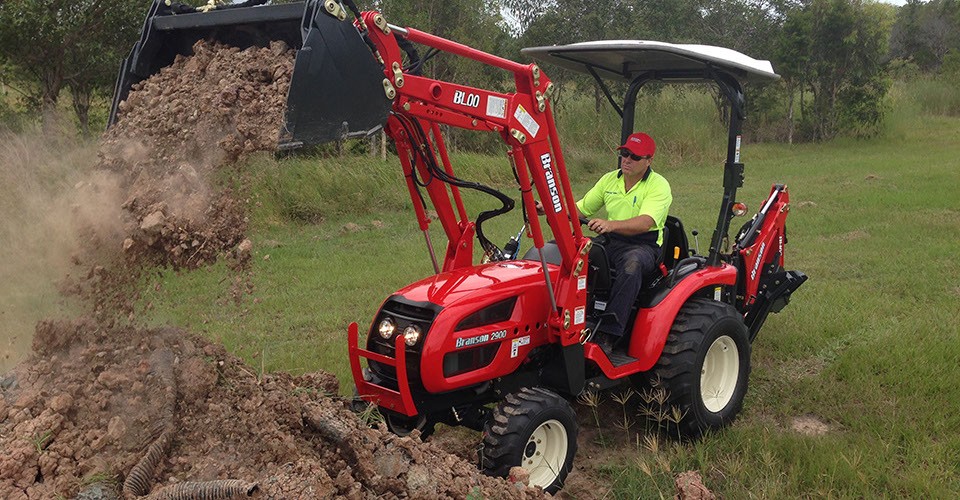
The Branson small tractor 2900 28HP – Made in Korea
If you’ve taken a tree change and moved to a small acerage on the outskirts of town, chances are at some stage you’ll think ‘This would be a whole lot easier with a tractor’ will arise. But it’s not as out of reach as you might imagine, especially when there are small farm tractors for sale that were built to make exactly what you’re doing a whole lot easier.
Perhaps your acres of lawn have outgrown your regular mower and your patience. You and your lower back are sick and tired of hours of wheel-barrowing. Or your reasons to push, pull, cut, dig and just plain work hard are slightly more complicated.
Rest assured: there are small tractors for sale that will end your worries. But what should you be looking for? What’s the difference between a good and a bad small tractor? Is it the right size? Does it have the right features and implements? Will it really do what I want it to do for years and years to come?
Here are some tips for choosing from all those small farm tractors for sale:
1. Big ability
Firstly, rest assured that most machines you will find in the ‘small tractor’ category are actually fully kitted out in comparison to their bigger, more expensive counterparts. So unless your farm is huge, a 15kW-25kW small tractor will get your job done.
2. Understand power
Unlike a car, a tractor’s useful power can be harder to understand. For instance, you might have two tractors with the same horsepower, but the actual quoted engine speeds differ. If this is the case and the prices are comparable, go for the small tractor with the higher torque.
3. Is 2WD enough?
Bear in mind that while there may still be two wheel drive tractors on the market, most good, modern small tractors these days are 4WD. Just because your land may be quite small, you will still make do with that extra ability and traction when the going gets tough, especially if you’re going up and down hills.
4. Check the PTO
Your small tractor’s PTO (Power Take Off) is where your various implements will be ‘plugged in’, so make sure you have these shafts where you need them. For instance, you may need a mid-mounted one, and you may need a ‘live drive’-capable PTO that works whether the small tractor is moving or not.
5. Check the linkage
Similarly, while you’ll find your small tractor’s three-point linkage at the rear, make sure whatever implements you’re going to attach will be suitable. For instance, some small tractors will have only a ‘category 1’ linkage.
6. Check the hydraulics
Again, some of your implements – like a front-end loader – may require your small tractor to have a particular hydraulic capability, relating to how it lifts, how fast it is, and the complexity of the action.
7. Which transmission?
In short, in these ultra-modern times, don’t worry too much about the transmission specifications, except to bear in mind that if you’re going to be switching from forwards to reverse a lot, you’re probably going to enjoy an automatic much more! Same goes for power steering – if the small tractor for sale doesn’t have it, move on to one that does!
8. What brand?
Like anything, brand matters. Why’s that? Because a ‘good brand’ has that reputation because it has a history of delivering quality products that last. The key to finding a good brand is to research and understand what will really suit your needs. There are new players on the market that take on the traditional big American and Japanese brands for quality, performance and reliability. Compare and consider affordable Chinese and Korean tractors for sale.
In short, when you’re browsing those small tractors for sale, bear in mind that if you pick wisely, that investment should last you for years and be one of the most cost-effective farming expenditures you’ll ever make.


